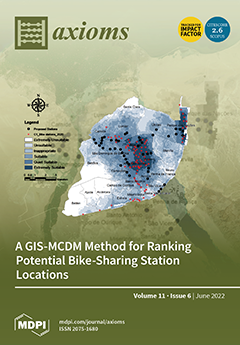The topology of an interconnection network can be modeled by a graph
. The connectivity of graph
G is a parameter used to measure the reliability of a corresponding network.
[...] Read more.
The topology of an interconnection network can be modeled by a graph
. The connectivity of graph
G is a parameter used to measure the reliability of a corresponding network. The direct product is an important graph product. This paper mainly focuses on the super connectedness of the direct product of graphs and cycles. The connectivity of
G, denoted by
, is the size of a minimum vertex set
such that
is not connected or has only one vertex. The graph
G is said to be super connected, simply super-
, if every minimum vertex cut is the neighborhood of a vertex with minimum degree. The direct product of two graphs
G and
H, denoted by
, is the graph with vertex set
and edge set
. In this paper, we give some sufficient conditions for the direct product
to be super connected, where
is the cycle on
n vertices. Furthermore, those sufficient conditions are the best possible.
Full article




